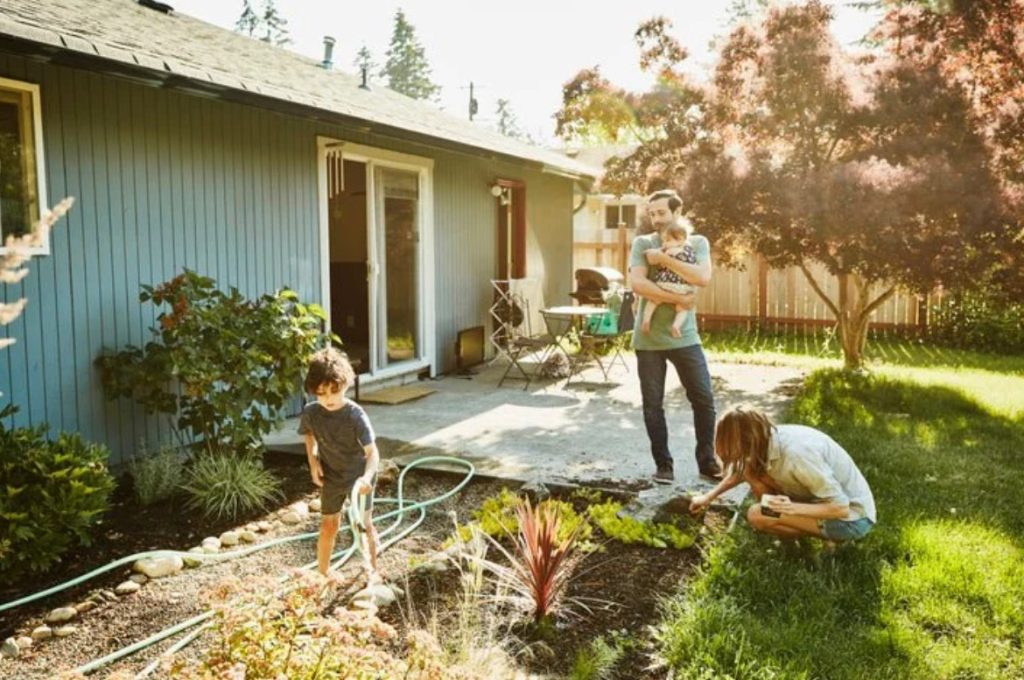
A popular personal finance tip you hear a lot, especially when grocery costs go up, is that you should plant a home garden. “After all, they did it during the war!” and “If everyone had a home garden, we could revolutionize the food industry!”
While well-meaning, this advice overlooks a lot of important things about gardening. For example, you can’t just drop seeds on the ground and come back to food. Gardening takes time and energy. And not an insignificant amount of knowledge and skill.
There’s also the costs involved. Seeds aren’t free. Pots aren’t free. Dirt isn’t even free.
So, with all this in mind, will gardening really save you money on groceries? The answer is: it depends. Let’s take a deeper look at the realities of home gardening.
The startup costs
Long before you can post Instagram photos of your bountiful harvest, you have to actually build a garden. While there may be local resources to help reduce those costs, starting a garden is rarely free.
The size of your garden
One of the main factors in startup costs is going to be the size of your garden. An apartment balcony garden is going to be a lot less expensive to start up than a full backyard setup. But you’ll also get a lot less use out of it.
Initial supplies
You’ll need to purchase a lot of supplies to get started. These may include:
- Pots and planting beds
- Seeds and plant starters
- Nutrient-rich soil or compost
- Fertilizers and soil conditioners
- Tools and accessories (gloves, spades, etc.)
If you’re in a rural-adjacent location or a green-focused city, things like compost and recycled pots may be free. Your local library may even offer a seed pantry with free seeds. Everything else is coming straight out of your bank account.
Don’t forget the water
At minimum, plants need three things to grow: air, sunlight, and water. Without water, your seeds won’t germinate and your plants will wither and die.
The cost of water involved in keeping your garden green will vary a lot by where you live. If you’re in a rainy environment, you may get away with watering only rarely. If you’re somewhere hot and sunny, you may need to water every day.
The time commitment
Even a small herb garden requires regular maintenance. And a backyard farm requires extensive time and commitment. You’ll need to weed, and water, and watch for pests. You’ll need to prune and trim and harvest.
Depending on your level of experience, you should also budget a good deal of time for frantically scouring the internet for answers to such questions as, “What is that bug on my plant?”, “Why are the leaves turning brown/yellow/spotted?”, and “Why does my [fruit/vegetable] look like that?!”
Home gardening is a full-time hobby, or even a part-time job in some cases. If you don’t have the time to put into maintaining what you plant, you probably won’t get much out of it.
The return on investment
So, you’ve bought the supplies, planted the garden, and put in the time. Now it’s time to harvest. Did you actually come out ahead? Depending on what you planted — and what actually grew — the answer could very well be, “Yes.”
But gardening has a learning curve, and breaking even often takes time. In most cases, you’re playing the long game. Don’t expect to make up every cent your first season, or even your first year.
Consider this: One pound of organic tomatoes can easily run you $3.50 at the local market. But to grow the same pound of tomatoes at home you likely had to spend $4 on seeds, $5 on dirt, $2 on a pot, and $3 on a sturdy trellis. You also had to pay to water it all summer. Oh, and that’s not counting the cost of the time you spent babysitting your little tomato plant for months on end.
In this scenario, did you save money growing your own tomatoes? Of course not.
But what about the next batch of tomatoes? And the next? That little tomato plant could very well pump out tomatoes for a few months before the cold weather hits. Even better, if you’re in a warm climate, you could grow tomatoes well into the fall.
Then there’s next year. Seeds can stay productive for a few years in most cases. You can also harvest new seeds from the fruits and vegetables you grew last year to be planted the next. As for the rest of your supplies, they should last for quite a while, too. You shouldn’t need to replace a sturdy pot or trellis for at least a few years, if not more.
So, does a home garden save you money? No — and yes. If you’re willing to put in the time, then yes, with some patience and a little know-how, a home garden can absolutely save you money. But if you’re looking for a quick and easy fix for a high grocery bill, well, you’ll probably end up disappointed.